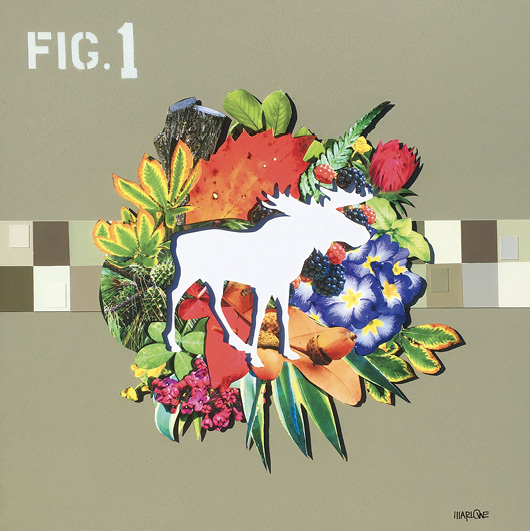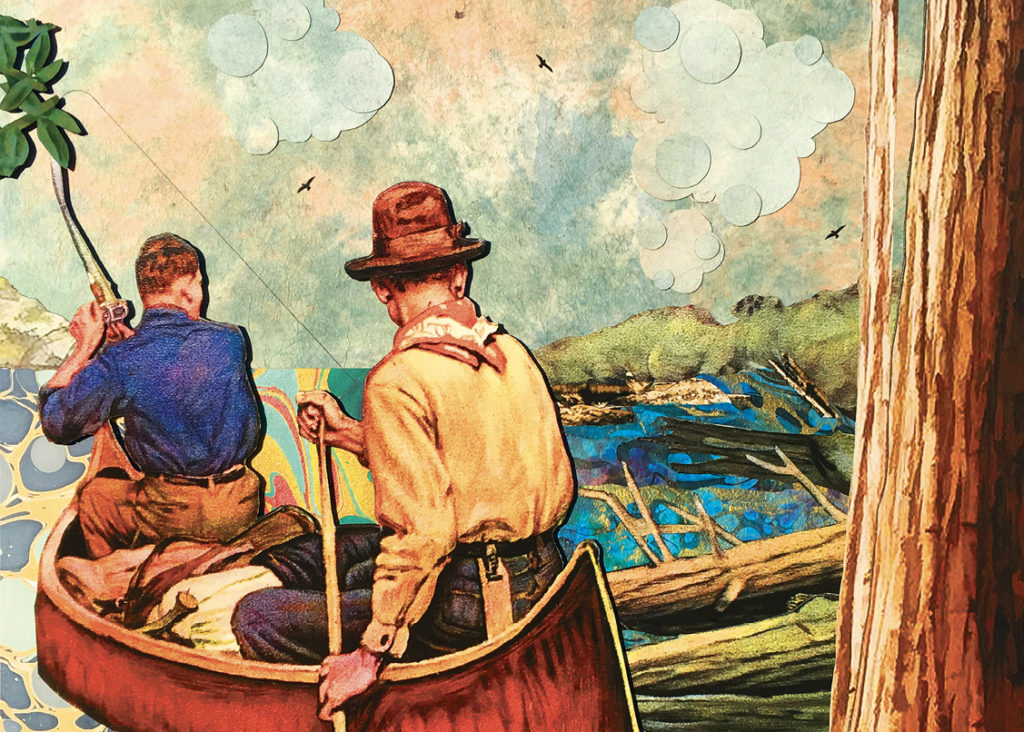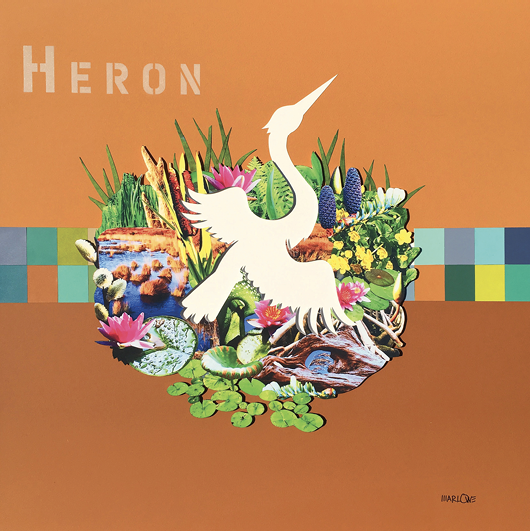While Ricky Schneider may have been in a field that took a lot of vision for many years, the former creative director of advertising knew that he wanted to use that artistic vision for something of his own. In 2016, he summoned all of that creativity and began working on pieces of art that, to his great pleasure, seemed to have an audience.

Dabbling in various styles that he had seen, Schneider soon landed on something that became his signature: using handmade papers and ephemera images from the 1920s, ’30s and ’40s to create dimensional art that seemed to pop from the canvas. “They can be anything, from trees and rocks to people, just anything from that period that gives me an idea for a piece,” he says. “I love unusual, colorful stuff, so my work is not subtle—I’ve been told that it’s the kind of art that grabs you by the lapels, it’s so colorful and bold. I don’t use a muted palette, and everything is very saturated with color—often very unusual colors, at that.”

What results is something that, besides being extremely colorful, is also very dynamic in its imagery. Having found his niche, Schneider adopted what is essentially his nom de plume: Marlowe. The reason? In part, because it is his middle name, but it is also greatly referential to the pulp fiction character of Philip Marlowe, who rose to fame in colorful tales of the hardboiled detective in the 1940s. “I started out doing what I call pulp fiction art, so it seemed fitting,” says the artist. Still, there’s a little more to the story that gives it even more gravitas. “My father was a pulp fiction writer, but I didn’t actually find that out until he’d passed. A box of his things was sent to me, and I found pulp fiction magazines from the 1930s and ’40s—all crime drama—and my father had written many of the stories in there. They were over-the-top and fun stories that seemed saturated with color. I loved it, and that’s what got me started on doing the pulp fiction art.”

Much like his pieces, however, Marlowe has more than one dimension and often does softer pieces with subject matter that runs toward the natural, rather than the fictional. And while the dichotomy of the two may be striking, they are still fully Marlowe, drenched in color and full of dimension.
Regardless of the images he’s working with, the process is always the same. “It’s multi-stepped. I have to find the image—usually something very unique and quirky—and then order the paper. I use handmade papers made in Thailand, with super-saturated colors and interesting patterns and flaws in them, flecks and spots that add to the raw quality of the work,” says Marlowe. “The images must be mounted on foam core board and then cut, then pasted down. Between all of the cutting and pasting, creating my large-scale pieces is physically taxing on my back. It’s also hard on my hands! I use a really sharp X-Acto knife and have cut myself countless times. I’ve also superglued my hands together and to my canvases, something that happens so often that it’s not even surprising to my wife anymore. She’s learned how to get them apart with nail polish remover and a nail file,” he admits with a laugh.

Self-professed as an “assembler,” Marlowe is much more than that. His work takes patience, precision and careful planning. So much so, in fact, that he avoids distraction. “I need absolute silence when I’m working,” he says. “Background noise or music can make me work too fast because I’ll get swept up in the rhythm, and then I make mistakes. That’s not something I can really afford to do, using lots of cut paper that is very expensive. I don’t really have the opportunity to fix something because I can’t recut it. Working in layers means I have to make a plan. I figure out the bottom layer first and work up from that, and sometimes they’re really complex, with three or four layers. I basically have to create a schematic before I start working.”

Taxing though the process may be, both mentally and physically, Marlowe continues to create his pieces—despite his repeated oaths to his wife that he’s “never going to do another” once he’s put the finishing touches on his last one. His creative drive is too great to allow him to stop and his inspiration too plentiful. Now, with more than 50 pieces of art in his collection, Marlowe is represented at New Elements Gallery in Wilmington, North Carolina, and Artistic Transfer in Dallas, Texas. *
Liesel Schmidt lives in Navarre, Florida, and works as a freelance writer for local and regional magazines. She is also a web content writer and book editor. Follow her on Twitter at @laswrites or download her novels, Coming Home to You, The Secret of Us and Life Without You, at amazon.com and barnesandnoble.com.

